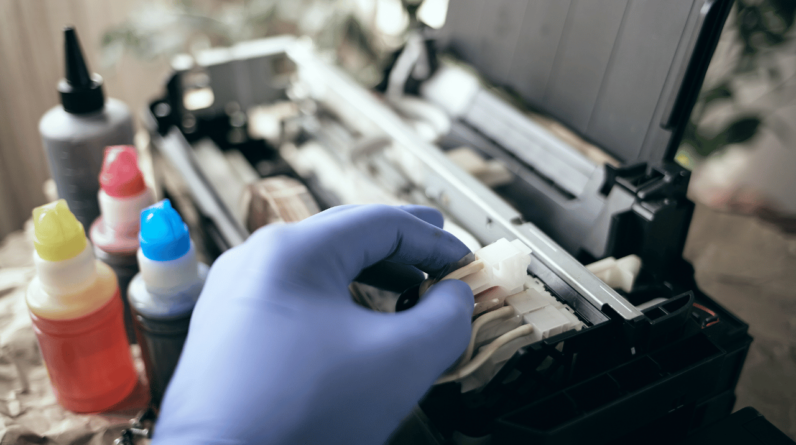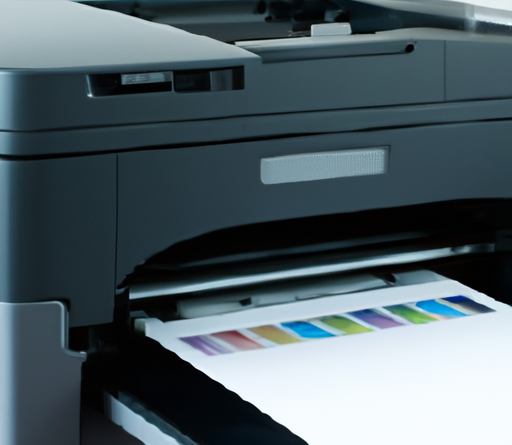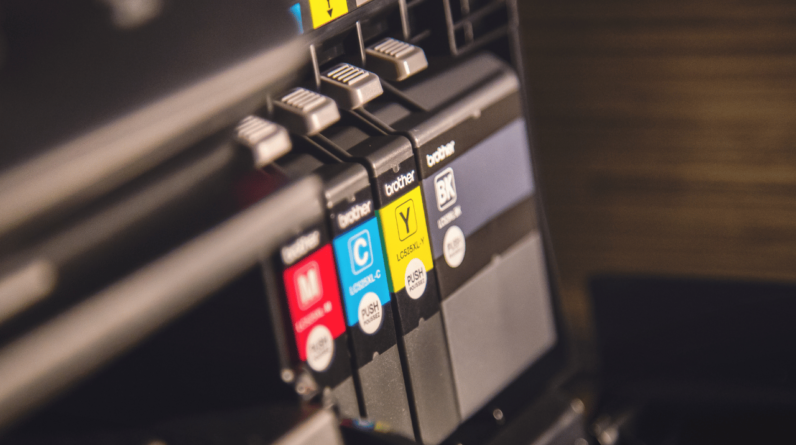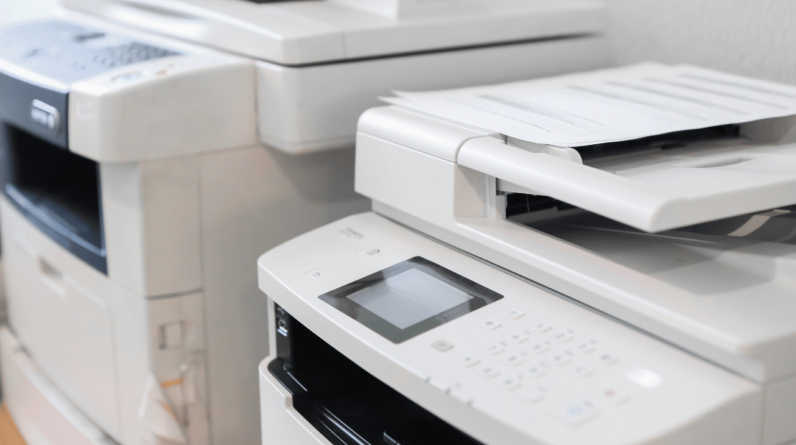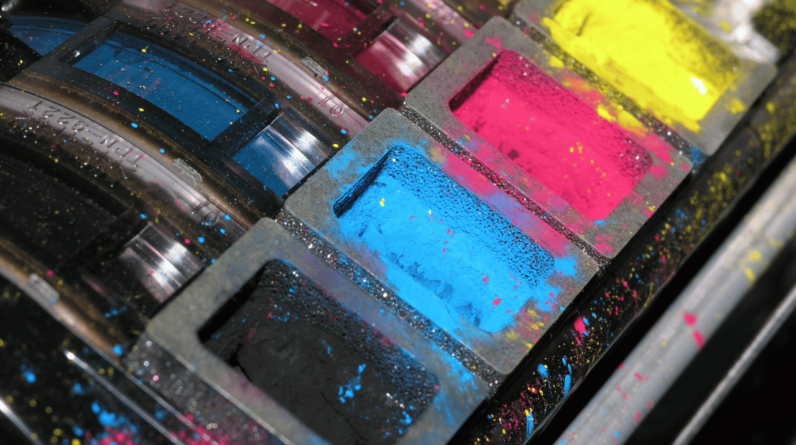
Disclaimer: This post may contain affiliate links. As an Amazon Associate, we earn from qualifying purchases.
Maintaining your printer properly is essential for its longevity and optimal performance. With the “How to Properly Maintain Your Printer” product, you can acquire the knowledge and tools necessary to keep your printer in top-notch condition. This printer maintenance kit provides step-by-step instructions, helpful tips, and all the essential cleaning supplies needed to prevent paper jams, extend the life of your printer, and ensure consistently high-quality prints. Say goodbye to frustrating printing issues and hello to hassle-free maintenance with this comprehensive and user-friendly solution.
Regular Cleaning and Maintenance
Clean the Exterior
To keep your printer in good working condition, it’s important to clean the exterior regularly. Dust and dirt can accumulate on the surface, which may affect the printer’s performance. Use a soft, lint-free cloth to gently wipe the exterior of the printer, removing any dust or smudges. Avoid using abrasive materials or harsh chemicals that could damage the printer’s casing.
Clean the Interior
In addition to the exterior, it’s crucial to clean the interior of your printer. Over time, dust and debris can build up inside, leading to paper jams and poor print quality. Start by turning off the printer and unplugging it from the power source. Carefully open the printer cover and use a small, dry brush or compressed air to remove any loose dust or debris. Be cautious not to touch any internal components or circuits while cleaning.
Use Appropriate Cleaning Materials
When cleaning your printer, it’s essential to use the right materials to avoid causing any damage. Avoid using alcohol-based or ammonia-based cleaners, as they can harm the printer’s plastic parts. Instead, use a mild detergent diluted with water or specialized printer cleaning solutions. Always make sure to follow the manufacturer’s instructions when using any cleaning agent.
Replace Ink Cartridges
Regularly checking and replacing ink cartridges is crucial for maintaining optimal print quality. When the ink levels are low, your prints may appear faded or streaky. To ensure consistent and high-quality prints, make it a habit to check your ink levels regularly. When the cartridges are empty or nearing empty, replace them promptly. Follow the instructions provided by the printer manufacturer to safely and correctly replace the cartridges.
Preventive Maintenance
Preventive maintenance goes a long way in prolonging the lifespan of your printer. Schedule regular printer maintenance checks, including professional servicing if necessary. This will help identify and address any potential issues before they escalate. Additionally, familiarize yourself with the printer’s user manual or online resources to know how to troubleshoot common problems and perform basic maintenance tasks, such as nozzle cleaning or printhead alignment.

This image is property of images.unsplash.com.
Proper Handling and Storage
Avoid Overuse
While printers are designed to handle a certain workload, excessive use can lead to premature wear and tear. Avoid overusing your printer by being mindful of the number of prints you generate each day. If possible, distribute large print jobs over multiple devices or consider utilizing professional printing services for bulk printing needs. By not pushing your printer beyond its recommended usage limits, you can help prolong its life expectancy.
Use High-Quality Paper
The choice of paper can significantly impact print quality and the overall performance of your printer. Always use high-quality paper that is specifically designed for your printer type. Inferior paper may cause paper jams, smudging, or subpar print results. Look for paper that is compatible with your printer’s specifications, such as weight, size, and coating. Investing in good quality paper will not only improve the output but also prevent unnecessary wear and tear on your printer.
Store Paper Properly
Proper storage of paper is crucial to maintain its integrity and prevent issues during printing. Store paper in a cool, dry place to avoid moisture absorption, which can cause paper jams and smudging. Ensure that the paper is stored in a flat position and protected from exposure to direct sunlight. Avoid placing paper near sources of heat or cold, as extreme temperatures can affect its quality and cause feeding problems in the printer.
Handle with Care
When handling printed output, it’s important to exercise caution and handle the paper gently. Rough handling can lead to paper jams or creases that affect print quality. Avoid bending or folding the paper and handle it by the edges to minimize contact with the printed surface. Additionally, if you’re clearing any paper jams, follow the manufacturer’s instructions to avoid causing any damage to the printer’s internal components.
Software and Firmware Updates
Check for Updates
Regularly checking for software and firmware updates is vital for keeping your printer running efficiently. Visit the manufacturer’s website or use the printer’s control panel to check for available updates. Manufacturers often release updates to address bugs, enhance performance, or introduce new features. By staying up to date with the latest software, you can ensure optimal compatibility and improved functionality for your printer.
Update Printer Software
Printer software updates are designed to improve the printer’s performance, fix any known issues, and enhance compatibility with different operating systems. Follow the instructions provided by the manufacturer to update your printer’s software. Typically, this involves downloading the update from the manufacturer’s website and following the installation steps. It’s recommended to close any running programs on your computer and temporarily disable antivirus software before initiating the update process.
Update Printer Firmware
Printer firmware is a low-level software that controls the basic functions of the printer. Updating the firmware can provide performance improvements, security enhancements, and bug fixes. Check the manufacturer’s website for firmware updates specific to your printer model. Before updating the firmware, ensure that your printer is connected to a stable power source and follow the manufacturer’s instructions carefully. Interrupting the firmware update process can cause irreversible damage to the printer.
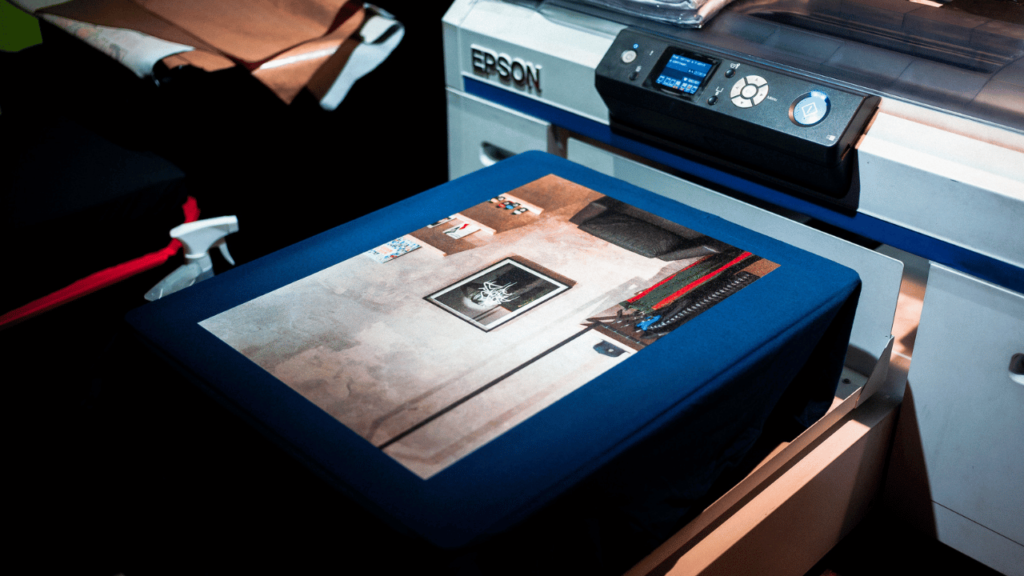
Proper Usage Habits
Print Regularly
Printers are designed to be used regularly. Periods of inactivity can result in ink drying up or clogging the print nozzles, leading to poor print quality. To keep your printer operating optimally, it’s recommended to print a few pages at least once a week. If you anticipate a longer period of inactivity, consider turning off the printer after printing a few test pages to prevent ink drying issues.
Avoid Interrupting Print Jobs
When printing, it’s important to allow the printer to complete its job without interruption. Abruptly opening the printer cover or turning off the printer while it’s still printing can cause paper jams or damage internal components. Wait for the print job to finish, or if necessary, cancel the print job using the printer’s control panel, software, or app. Avoid pulling paper out forcefully if it gets stuck during a print job; instead, follow the printer’s instructions for clearing paper jams.
Turn Off Printer When Not in Use
To conserve energy and reduce wear on the printer, it’s advisable to turn it off when it’s not in use for extended periods. However, if your printer frequently goes into sleep or standby mode, it may be more energy-efficient to leave it on. Refer to the printer’s user manual or power management settings to determine the most suitable option for your needs. If you choose to turn off the printer, ensure that the power button is pressed properly and that the printer is completely powered down.
Avoid Overheating
Printers generate heat during operation, and excessive heat can negatively impact their performance and lifespan. To avoid overheating, ensure that the printer is placed in a well-ventilated area. Avoid covering the printer with any objects that can trap heat or restrict airflow. If you notice excessive heat or hear unusual noises coming from the printer, turn it off immediately and consult the manufacturer for further assistance.

Printer Maintenance & Preventive Measures
Keep Printer Covered
Part of printer maintenance is covering your printer when it’s not in use can provide protection against dust, airborne particles, and accidental spills. Utilize a printer cover specifically designed for your printer model or improvise with a clean, dust-free fabric cover. If your printer doesn’t come with a protective cover, consider storing it in a dedicated printer cabinet or a dust-free area to minimize exposure to environmental contaminants.
Avoid Dust and Moisture
Dust and moisture are common enemies of printers. Dust accumulation can block the printhead nozzles, affect print quality, and cause paper jams. Moisture, on the other hand, can lead to smudging, ink bleeding, or paper deformation. Regularly dust the printer and its surroundings, ensuring that air vents and paper trays are free from dust or debris. Additionally, avoid placing liquids or beverages near the printer to prevent accidental spills.
Printer Maintenance Included Using Surge Protectors
Power surges and electrical fluctuations can damage your printer and other electronic devices. Protect your printer by using a surge protector or an uninterruptible power supply (UPS). These devices help regulate the voltage and provide protection against sudden power surges or outages. Invest in a high-quality surge protector and ensure that it has adequate capacity to handle your printer’s power requirements, including any additional peripherals or accessories connected to the printer.
Avoid Overloading the Printer
Each printer has its recommended maximum paper capacity. Avoid overloading the paper tray beyond this limit, as it can cause paper jams and put stress on the printer’s feeding mechanism. Familiarize yourself with the printer’s paper-handling specifications, including the types and weights of paper it can handle. Overloading may also result in poor print quality or skewing of the printouts. If you need to print a large number of documents, consider staggering the printing process or investing in a printer with higher paper capacity.
By following these printer maintenance tips and adopting proper usage habits, you can ensure that your printer operates smoothly, consistently delivers high-quality prints, and lasts for years to come. Regular cleaning, appropriate handling and storage, software and firmware updates, and preventive measures all contribute to the longevity and reliable performance of your printer. Remember to consult the manufacturer’s guidelines and refer to the printer’s user manual for specific instructions and recommendations tailored to your printer model.


